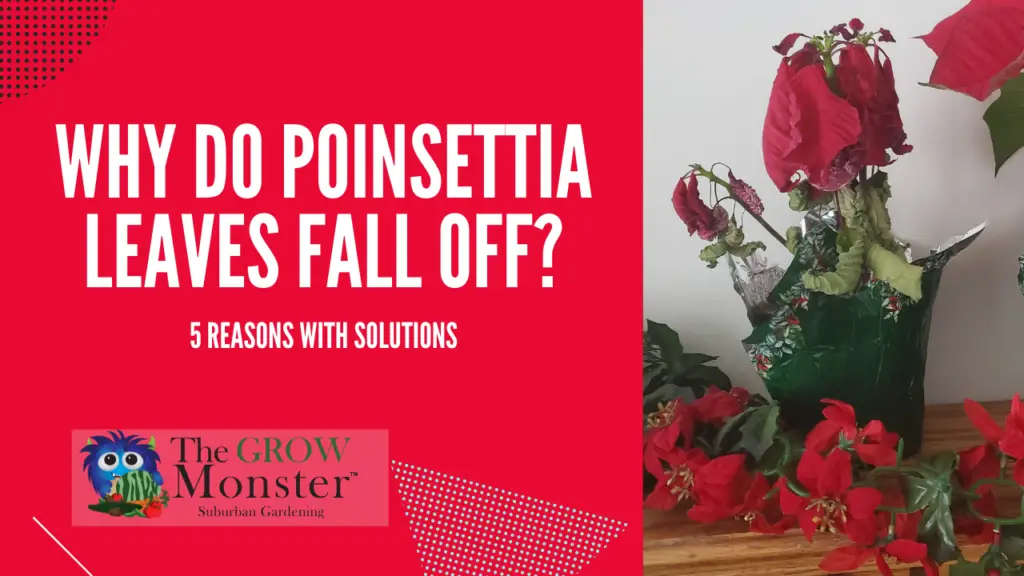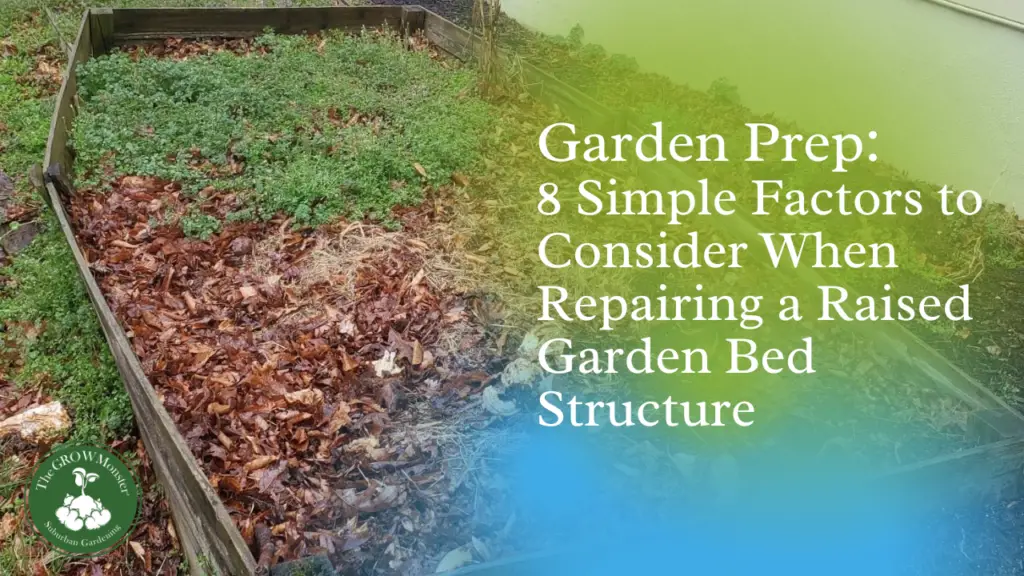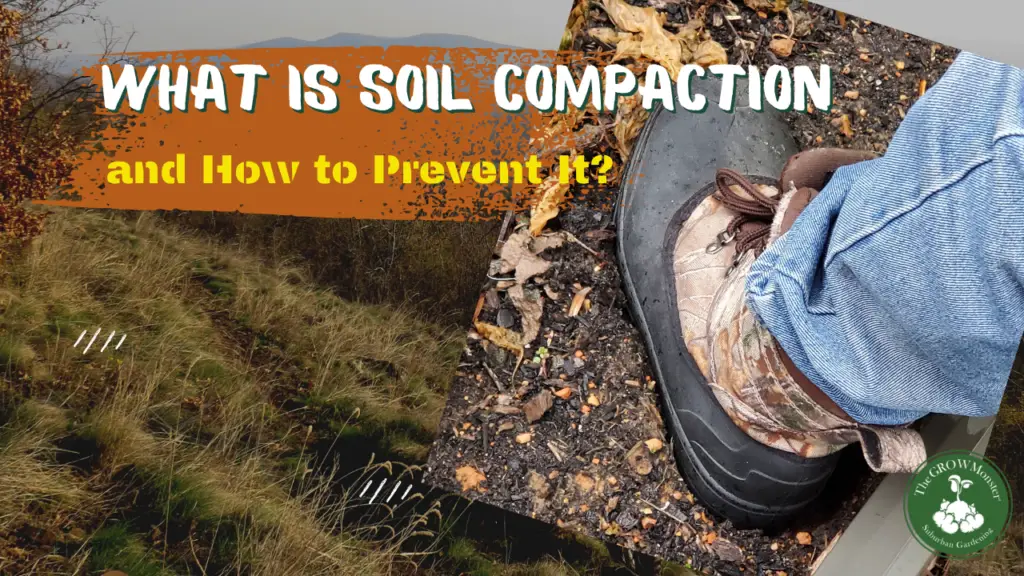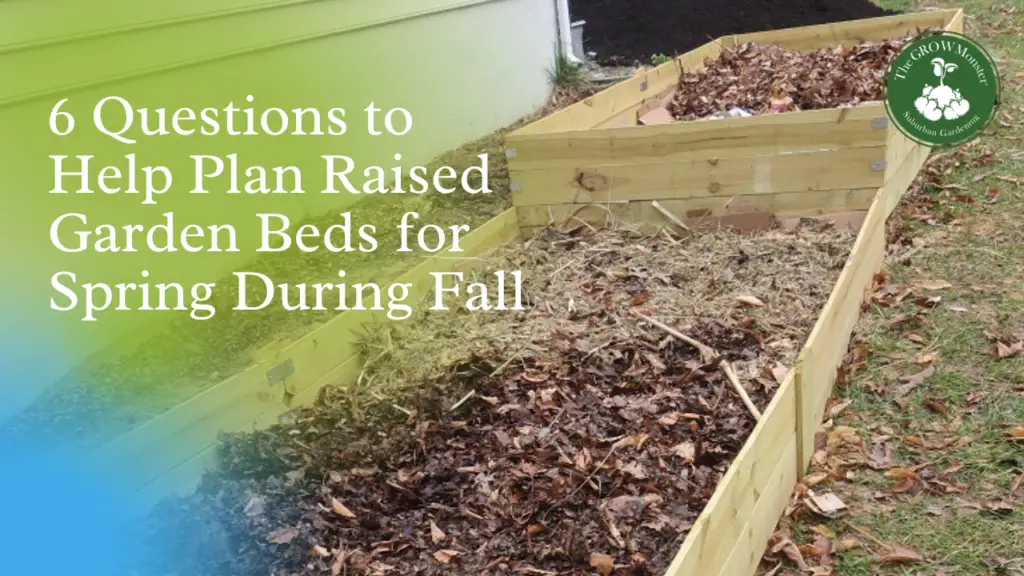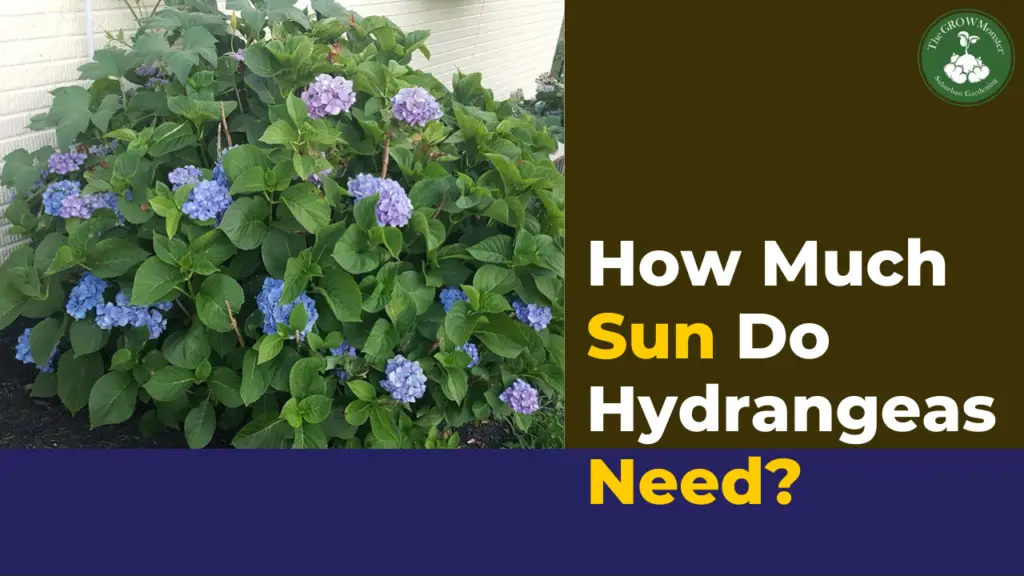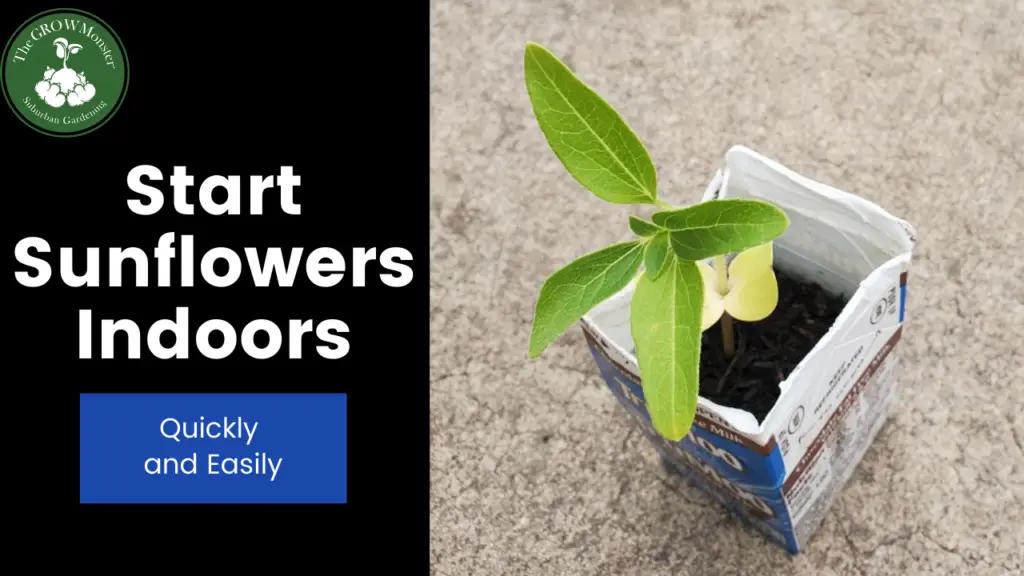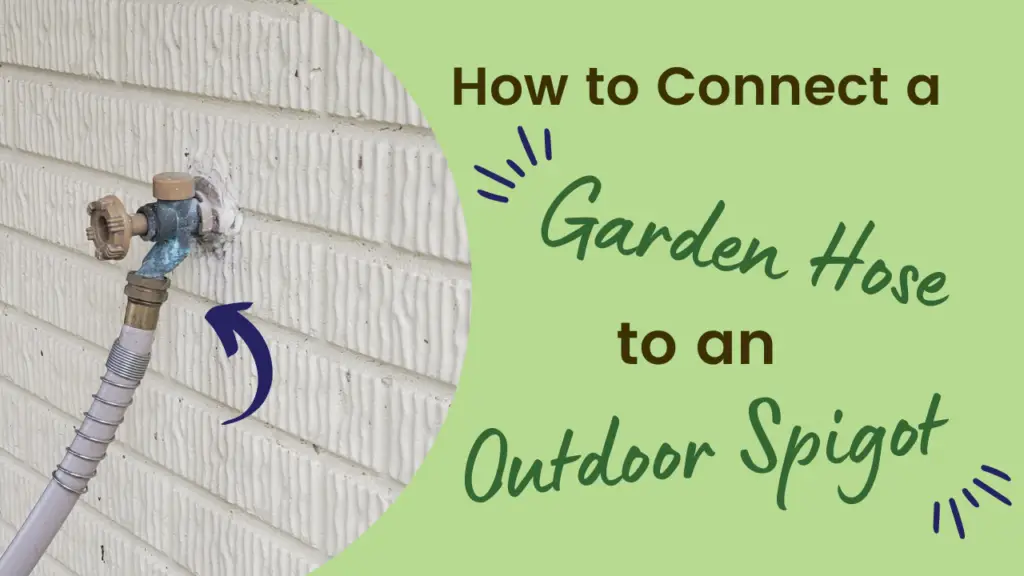Like many of you, The Grow Monster has owned our fair share of Poinsettias over the Christmas holidays. They make great decorations for the table, counter, and fireplace mantle going right up to the holidays. Then, things tend to head south with the Poinsettia plant. The Poinsettia leaves fall off! So, over the years The Grow Monster treated these plants much like you would the wrapping paper after all the presents have been opened: we were throwing them out. There are several reason why Poinsettia leaves fall off, but it can be preventable.
The five reasons why Poinsettia leaves fall off are:
- Not enough water
- Too much water
- Freezing Temperatures
- Changes in light and position
- The Need to Rest
Usually what happens, is shortly after Christmas -just like clockwork- the leaves would start to wilt, fall off, and we found ourselves left with a mess of leaves to clean up along with an unappealing green stalk of its former self in an over-glorified pot dressed in red decorative foil wrapping. This year we were determined to find out what is behind this phenomenon and get to the bottom of it to see what we can do to prolong the life and beauty of these Poinsettia plants long after the Christmas holiday.
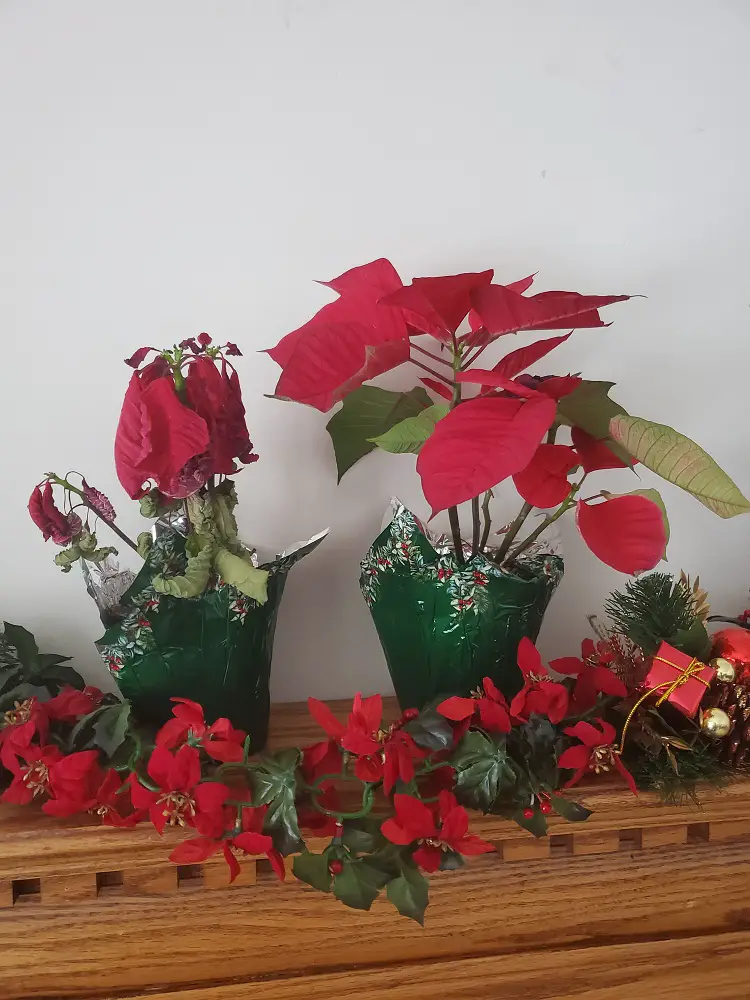
There are a couple reasons why Poinsettia leaves fall off. Knowing the reasons that follow will help you prolong the enjoyment of the plant well past the Christmas holiday, the New Year, and beyond. The Poinsettia’s beauty comes at a price: it is a sensitive plant when it comes to its leaves. The main reasons why Poinsettia leaves fall off include not having enough water, having too much water, frost bite, change in light positions, bug infestation, and finally one that came to a surprise to The Grow Monster : the plant needs to rest!
Poinsettia Leaves Fall Off From Not Enough Water
The poinsettia is a native plant from a tropical climate in southern Mexico. This is a climate that includes higher levels of humidity along with higher-levels of moisture maintained in the native soils. When these plants are moved or grown in more Northern areas for the Christmas holidays, they are usually placed in households that are very dry with low humidity.
This poses a particular problem for the poinsettia when it comes to water: it needs to be watered more regularly than your average house plants in order to keep the soil ‘moist’, but not sopping wet. If you let it go too long between watering, the soil becomes bone-dry and the plant will begin to sacrifice its leaves. Check out our post on how to water your Poinsettia plant here.
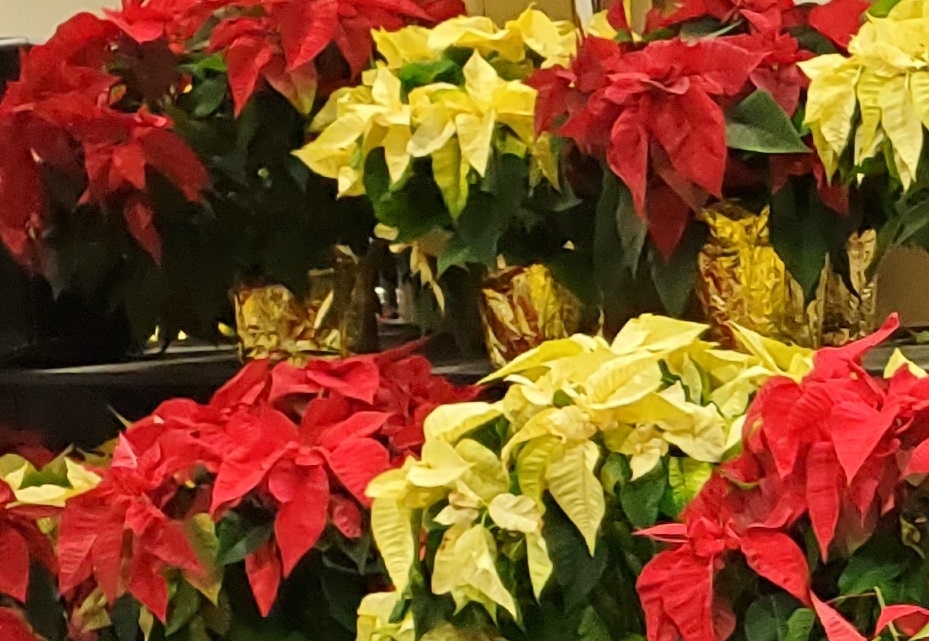
Poinsettia Leaves Fall Off From Too much water
Just because the Poinsettia comes from a tropical climate in southern Mexico, doesn’t mean it can swim in huge amounts of water. Like many plants, the roots of the Poinsettia need to absorb oxygen from the air in the soil. One common mistake that new owners of the Poinsettia plant make when they bring their plant home is not puncturing the decorative foil underneath for drainage.
If the decorative foil surrounding the plant is not punctured and a saucer for drainage placed under, water will begin to pool at the bottom of the container of the plant with each watering. This eventually cause the roots of the plant to rot. Before too long, you will begin to notice the leaves changing color starting from the bottom and beginning to fall off.
Poinsettia Leaves Fall Off From Freezing Temperatures
Being from the tropical climate of southern Mexico, poinsettias do not take kindly to cold temperatures. They will behave much like other annual plants when exposed to the cold temperatures of the north: they wilt.
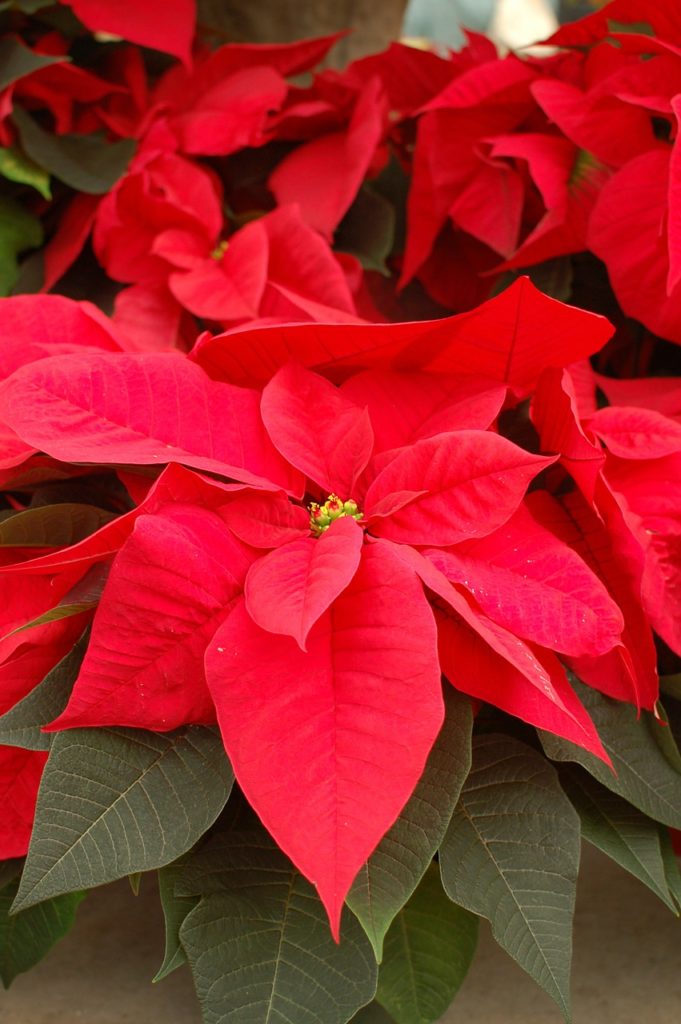
One mistake that many retailers in the norther hemisphere make during the holiday season when promoting and selling Poinsettias is that they are placing them in proximity of the store’s entry way. Doing this exposes their leaves to the cold and sometimes freezing temperatures outside each time a customer enters or leaves the building. A good tip to remember when buying poinsettias at these places is to pick from the one’s furthest from the door way. Otherwise, you risk taking a plant home with frost damage only to find the leaves wilting before you place it on the mantel as a decoration.
Poinsettia Leaves Fall Off From A Change in Light and Positions
One of the big draws of the Poinsettia is its vibrant red colors during the Christmas season. This is a result of what they are doing at the greenhouses with the Poinsettia before the season: giving it very little light. This means that the Poinsettia is very sensitive to light. It is so photosensitive that it will turn its own leaves red if left experiencing long periods of darkness. Yes, The Grow Monster said ‘leaves’.
The actual Poinsettia flower is rather small nestled in the center of the leaves. You will also notice that the lower-level leaves of the poinsettia are green. With all of the light sensitivity, they have found that plants that are moved around a lot with changes in light will experience a loss in leaves. So a good tip to remember is don’t move the plant around too much or its position relative to its light source and be sure it continues to get plenty of sunlight.
Poinsettia Leaves Fall Off When The Poinsettia Needs to Rest
The Grow Monster found an interesting article from the Texas Agricultural Extension Service by Sadie Hatfield that mentions poinsettias lose their leaves because they simply need to rest. It seems to make sense that our deciduous trees will lose leaves in the fall, so why not poinsettias?
In the article, they mention that poinsettias will generally lose their leaves after blooming to rest for two months or more. So, it begs the question, has The Grow Monster been throwing away live plants all these years after the Christmas holiday for going through what is a very natural part of their life cycle?
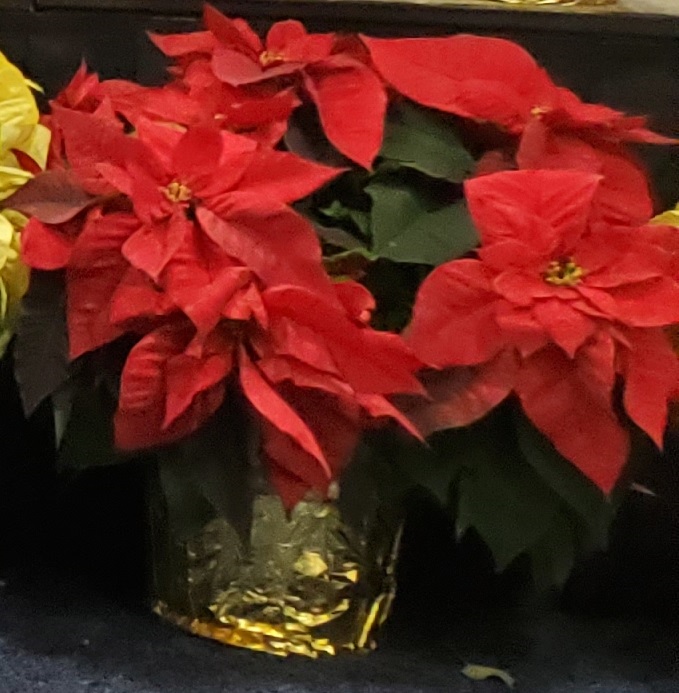
How To Stop Poinsettia Leaves From Falling Off
Knowing the five reasons for why Poinsettia leaves fall off in the first place will help us prevent them from falling off sooner than expected in the future. We can address the under-watering / over-watering reasons for why leaves fall off simply by knowing how much water to give the poinsettia. Be diligent about watering and care as it is not your normal house plant. Familiarize yourself with The Grow Monster post titled “How Often Do You Water a Poinsettia“to learn more about how to water your Poinsettia.
Remember to choose healthy Poinsettias that are not near the entryways of the store to reduce the risk of leaves falling off due to the freezing temperatures near those entryways in the winter months. Also, keeping the plants away from freezing areas of the home (e.g., window sills and doorways to the outside) will prevent the leaves from wilting and falling off.
Again, avoid moving the Poinsettia around too many times around the home. They are sensitive to this. Have a plan in place before you buy it. Know ahead of time where the plant is to be located. Also include in that plan a location with plenty of sun light where it will not be bothered with too much movement. Finally, understand that despite your best efforts, the leaves will need to come off sooner or later so that it can ‘rest’. Understand that you are now at a point to give the plant a break for a couple months until it is ready to start growing leaves again in the spring time.
How To Keep Poinsettias Alive When the Leaves Fall Off
Leaves will fall off the Poinsettia for many reasons including too much water, too little water, freezing temperature exposure, too much movement / change in light source as well as their need to just plain rest. Just because the leaves fall off doesn’t mean the plant is necessarily dead. The leaves are shed as a way to cope with the conditions that the plant finds itself in. Consider these “what ifs” to determine if your poinsettia is still alive:
- If you under-watered the plant and the stalk still looks healthy, then it still could be worth saving.
- If you over-watered the plant and it does not yet have root-rot setting in, then it still could be worth saving.
- If you exposed the Poinsettia to freezing temperatures and the stalk still is strong, healthy, and hasn’t turned to mush, then it still could be worth saving.
- If you accidentally moved it around the house and the Poinsettia leaves fall off but still has a healthy green stalk, then it might be worth saving.
- If you notice the Poinsettia leaves fall off the plant and the stalk still looks strong and healthy, then it is most likely just ‘resting’ and worth still saving.
As we’ve said before, the Poinsettia is not a typical house plant as it requires a bit more care and attention than other plants. If you do want to put in the time and investment, you can do a few things with the plant including:
Re-pot the Poinsettia
Re-pot the plant with a loamy, well-draining soil. You will want to combine the soil with peat moss to maintain a neutral to slightly acid soil that allows water to drain easily yet keeps the soil moist when watered, but not ‘sopping wet’ with good drainage.
Then give the plant a couple months until spring before expecting significant leaf growth. You can choose to add fertilizer to the soil in the spring and summer, but start to hold back in the fall and winter while it blooms. Water just enough to keep the soil moist during this time.
You will want to place the Poinsettia in a dark location for approximately 15 hours each night (5pm-8am) in the weeks prior to the Christmas holiday beginning in October. This is the secret used by the nurseries do to bring out the red, vibrant color in the leaves of the poinsettia. Forgetting to put it in a darker location with the 15 hour duration may yield just an ordinary, green plant for the holidays.
Create a cutting
In the event of root-rot, you can cut off the healthy portion of the Poinsettia stalk and attempt to root it with root-growth hormone. Place the cutting in a soil prepared in a similar fashion as re-potting the plant above. The only exception is that you will need to cover the plant with a clear plastic container so that it remains humid and doesn’t dry out, yet allows enough sunshine to get through. Again, water the soil enough to remain ‘moist’, but not ‘sopping wet’ with adequate drainage.
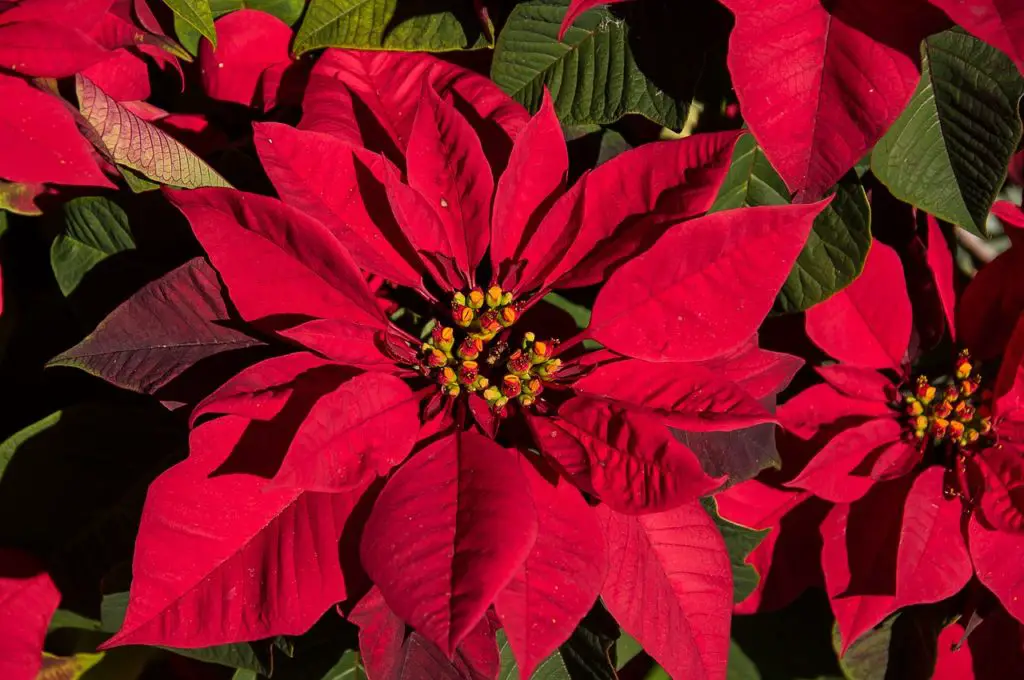
Final Thoughts
Are you throwing the Poinsettia out at the end of the Christmas holiday, because all the leaves have fallen off? It doesn’t have to be this way, really. The Grow Monster explored five reasons why Poinsettia leaves fall off the plant. Four of those reasons are preventable which we have explored, and the fifth reason is understandable. After an active Christmas holiday season in the north, we need to rest too. At the end of the day, if we choose to give them the time and attention they need, we can continue to save and care for our poinsettia plants for many Christmas holidays to come.

